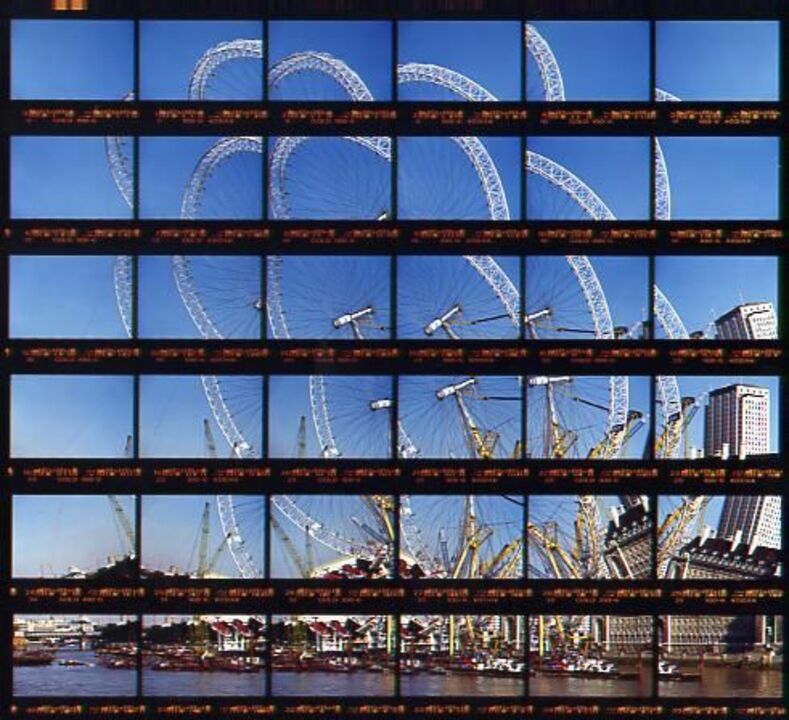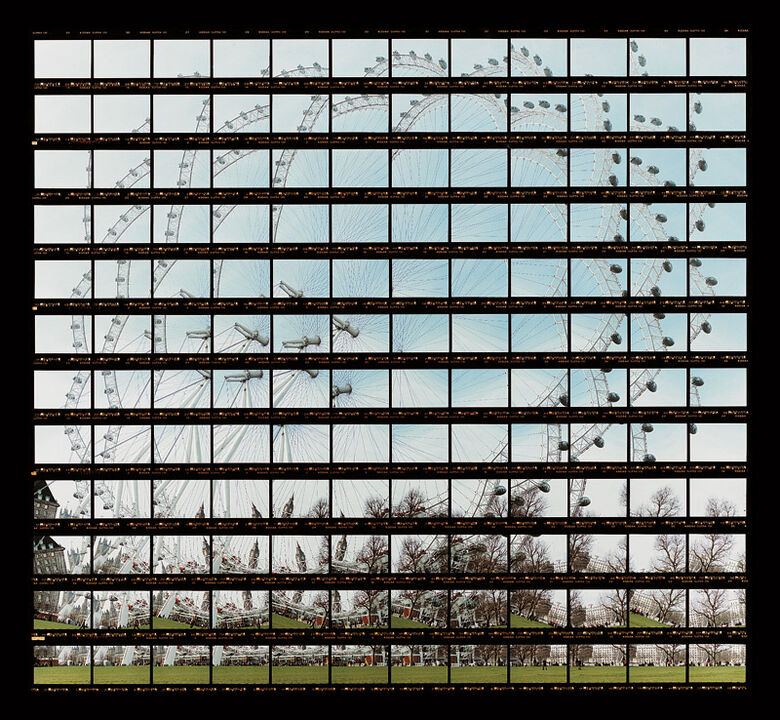London, London Eye Construction
The London Eye, a giant observation wheel was built as a part of London's millennium celebrations. The structure of the 135 metres height building was designed by the architectural team of David Marks and Julia Barfield. The capsules accommodating up to 25 passengers and every capsule is 8 meters long and weighs 500kg. 80 Spokes connect the rim with the spindle. A complete turn takes about 30 minutes. The London Eye had planning permission only for five years, but at that time Lambeth Council agreed to plans to make the attraction permanent.
From the book: David Clark Photography in 100 Words, 2009
Thomas KellnerGerman photographer Thomas Kellner’s images seem to be motivated by a combination of dedicated artistic endeavor and playful irreverence. Since 1997 he has worked on a series of carefully arranged ‘deconstructions’ of iconic buildings such as the Eiffel Tower, Brooklyn Bridge and Westminster Abbey.Initially inspired by Cubist art, Kellner decided to take a building’s constituent elements, reduce them to fragments and rearrange them in different ways. At first sight his images look like straightforward photomontages, but closer examination reveals that they are actually contact sheets made from strips of negatives running in sequence. Instead of being a step towards making a print, the contact sheets are the finished artwork. ‘On one level,’ Kellner says, ‘these images are a reaction to mass photography, to say, this is an over-photographed building – don’t waste any more time or materials on it. Another reason is to question the kinds of image we find in contemporary mainstream photography. It has stayed in tradition of the Renaissance-like window on the world, while Fine Art has moved on to totally different ideas and horizons.’When preparing to shoot a particular building, he sketches out how many frames to use, what to include in each frame and which lens to use. Then he uses a light meter to determine the best single exposure and uses it for each frame. Kellner’s ‘London Eye’ uses 144 frames to visually explode this popular landmark into a dynamic mosaic of recurring patterns and shapes. He says that his method was dictated by the circumstances in which he photographed the scene. ‘The London Eye security guards gave me only 15 minutes,’ he says. ‘I had to prepare everything in advance, run onto the ground and shoot it as fast as I could, without much control. I think the shooting speed is still inherent in the image, and that’s what makes the capsules fly so much.’










